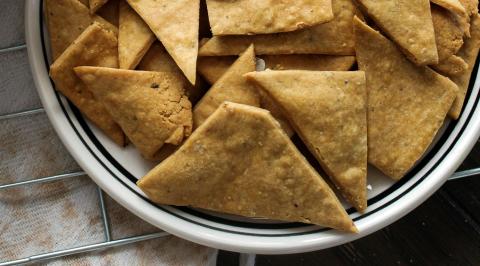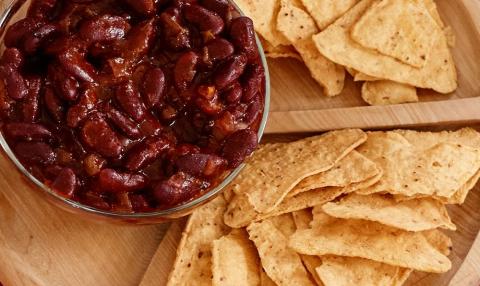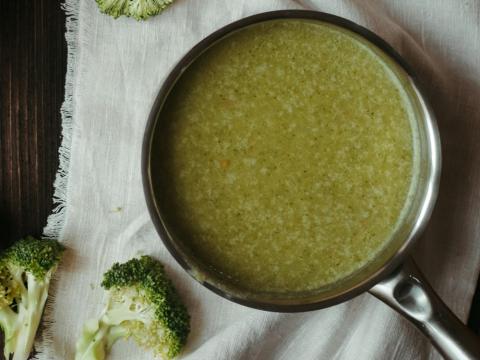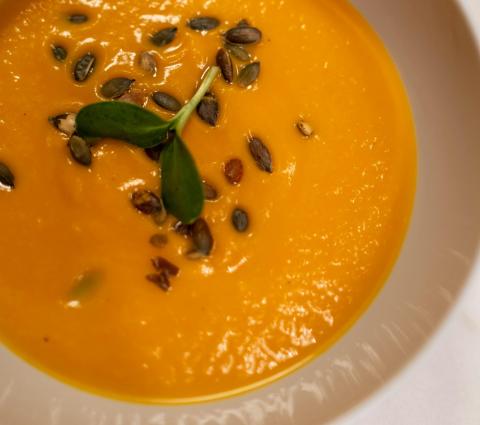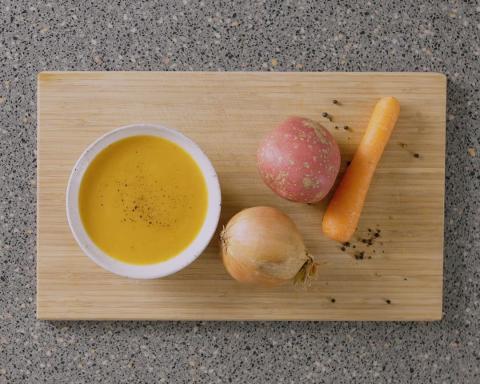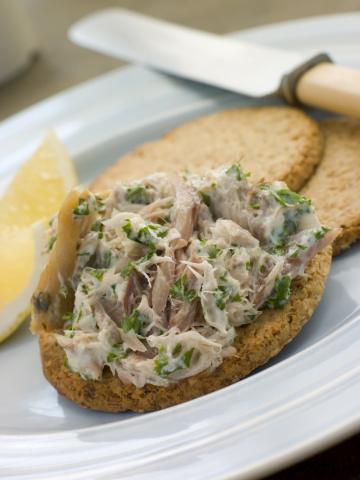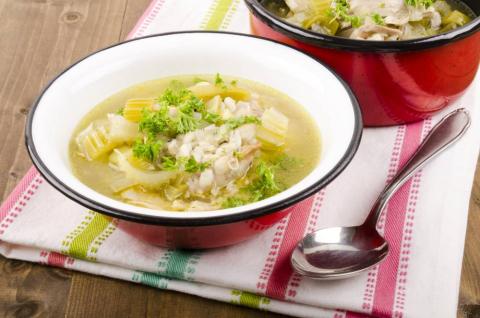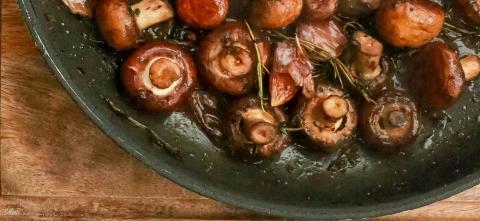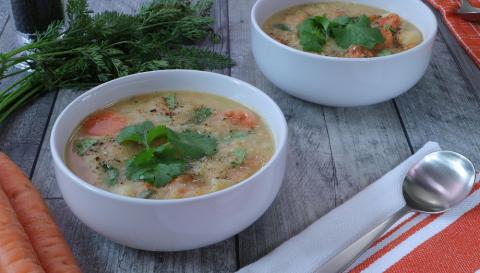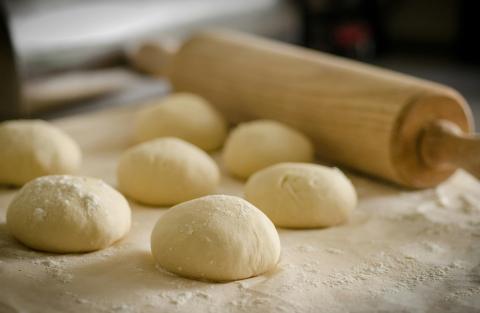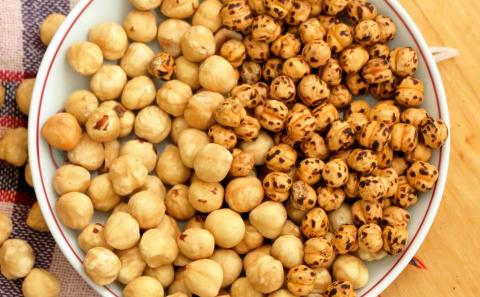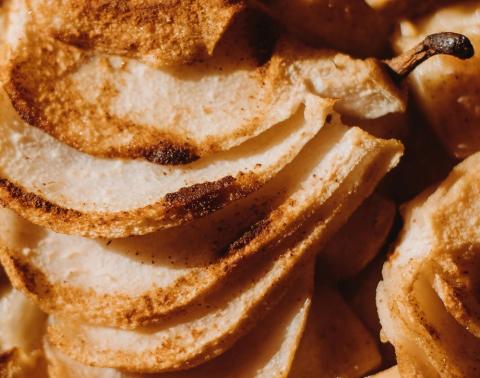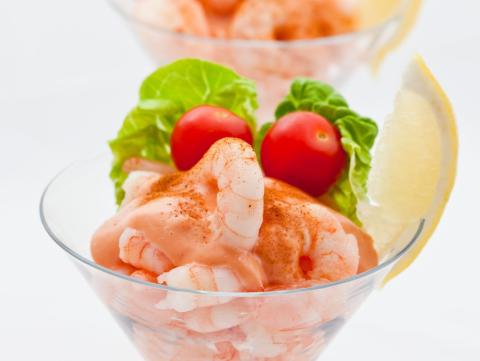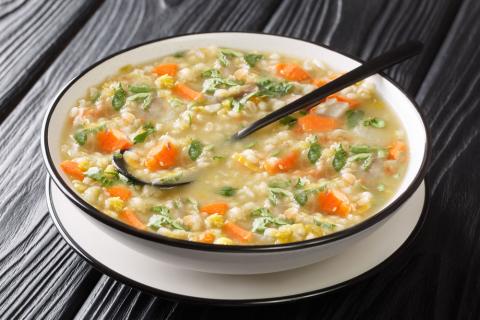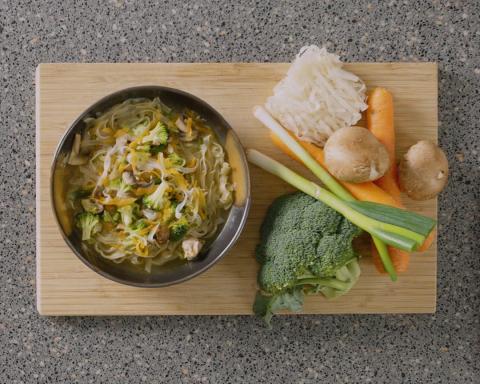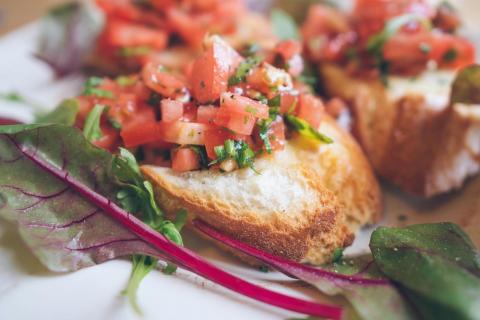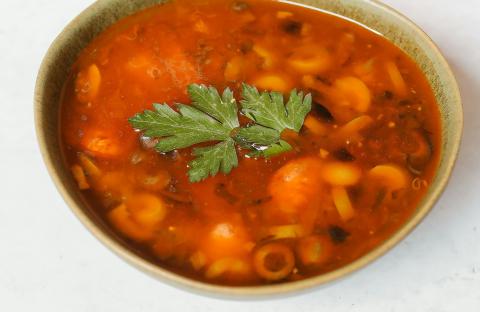- (240g) Chickpeas In Unsalted Water
- (10ml) Olive Oil
- (16g) Honey
- (5g) Ground Cinnamon
Ingredients
Allergy Disclaimer
Always check the label of each ingredient for allergy warnings.
Method
- Preheat the oven to 180°C / 160°C fan oven / 350°F / gas mark 4.
- Rinse the chickpeas in a colander and pop off all the skins (this is optional but adds to the texture)
- Line a baking tray with greaseproof/ baking paper and spread the chickpeas onto the tray.
- Bake in the oven for approximately 45 minutes. Test a chickpea to see if it crunches.
- While they are roasting mix the other ingredients in a bowl.
- When they crunch remove chickpeas from the oven and add to the bowl. Mix until the chickpeas are coated.
- Pour back onto the baking tray and bake for a further 10 minutes.
- Once cooled, store in an airtight container.
Remember that little ones can choke on small foods. Read our page on choking to see what you can do to prevent this.
Time Saver Tips
Why not try making these in advance and storing them until you need them? Talk about a handy snack for your wee one! If you don’t have the spices in the recipe, you could try others like mixed spice or chilli powder to add some heat.
Tips for Kids
If your wee one is a bit funny about spices, you could see if they prefer it if you just add a little less. As this recipe contains added sugar it’s best kept to mealtimes.
Nutritional Information
Based on a single serving of 54g (% of an adult's reference intake)
Energy
116 kcals ( 6 %)
488 kJ ( 6 %)
Fat
0.7 g ( 4 %)
Saturates
13.7 g ( %)
Sugar
4.9 g ( 5 %)
Salt
1 g ( 1 %)
Detailed nutritional information
| Per 100g | Per 54g serving | |
|---|---|---|
| Energy Kcals | 215 | 116 |
| Energy Kj | 903 | 488 |
| Protein | 7.6 g | 4.1 g |
| Total Fat | g | g |
| Saturated Fat | 1.3 g | 0.7 g |
| Carbohydrates | 25.3 g | 13.7 g |
| Total Sugars | 9.1 g | 4.9 g |
| NSP Fibre | 4.2 g | 2.3 g |
| Sodium | 2 mg | 1 mg |
| Salt | 1 g | 1 g |
Find out about nutritional labelling
Nutrition labels on the front of packaging
- Most of the big supermarkets and many food manufacturers display nutritional information on the front of pre-packed food.
- Front of pack nutrition labels provide information on the number of grams of fat, saturated fat, sugars and salt and the amount of energy (in kJ and kcal) in a serving or portion of a recipe.
- The labels also include information about reference intakes (expressed as a percentage) which are guidelines about the approximate amount of particular nutrients and energy required for a healthy diet.
- The colour coding tells you at a glance if the food has high (red), medium (amber) or low (green) amounts of fat, saturated fat, sugars and salt.
- The more greens on the label, the healthier the choice
- Amber means neither high nor low, so you can eat foods with all or mostly ambers on the label most of the time.
- Reds on the label means the food is high in that nutrient and these are the foods we should cut down on. Try to eat these foods less often and in small amounts.
Food shopping tips
If you’re trying to decide which product to choose, check to see if there's a nutrition label on the front of the pack. This will help you to quickly assess how your choices stack up. You will often find a mixture of red, amber and green colour coding for the nutrients. So when you're choosing between similar products, try to go for more greens and ambers and fewer reds if you want to make a healthier choice.
 Activities & Play
Activities & Play Behaviour
Behaviour Childcare
Childcare Development & Growing Up
Development & Growing Up Family, Friends & Relationships
Family, Friends & Relationships Feeding Your Baby
Feeding Your Baby Food & Eating
Food & Eating Health & Safety
Health & Safety Mental Health & Wellbeing
Mental Health & Wellbeing Money & Work
Money & Work Online Behaviour & Safety
Online Behaviour & Safety Pregnancy & First Days
Pregnancy & First Days School & Education
School & Education Sleep
Sleep


